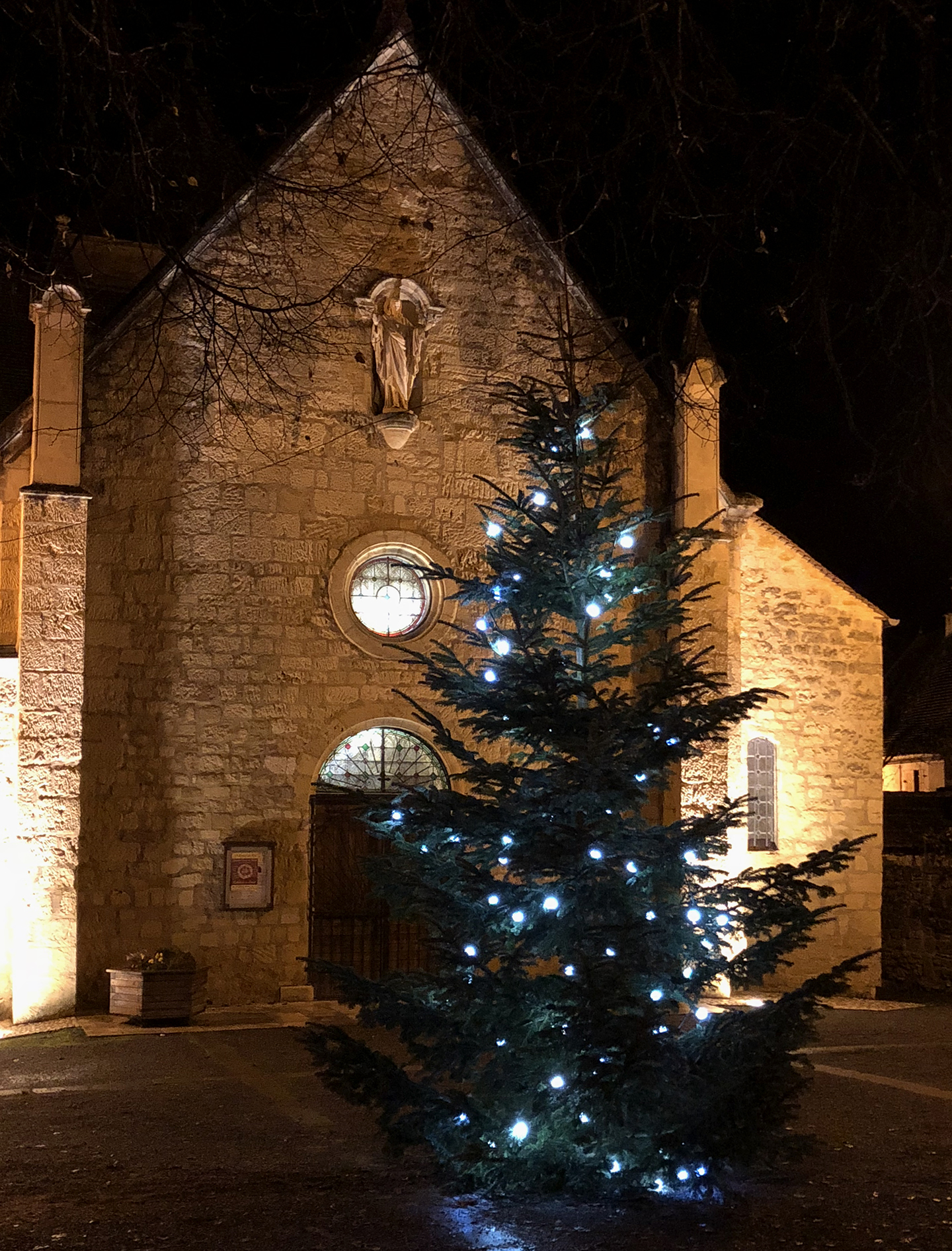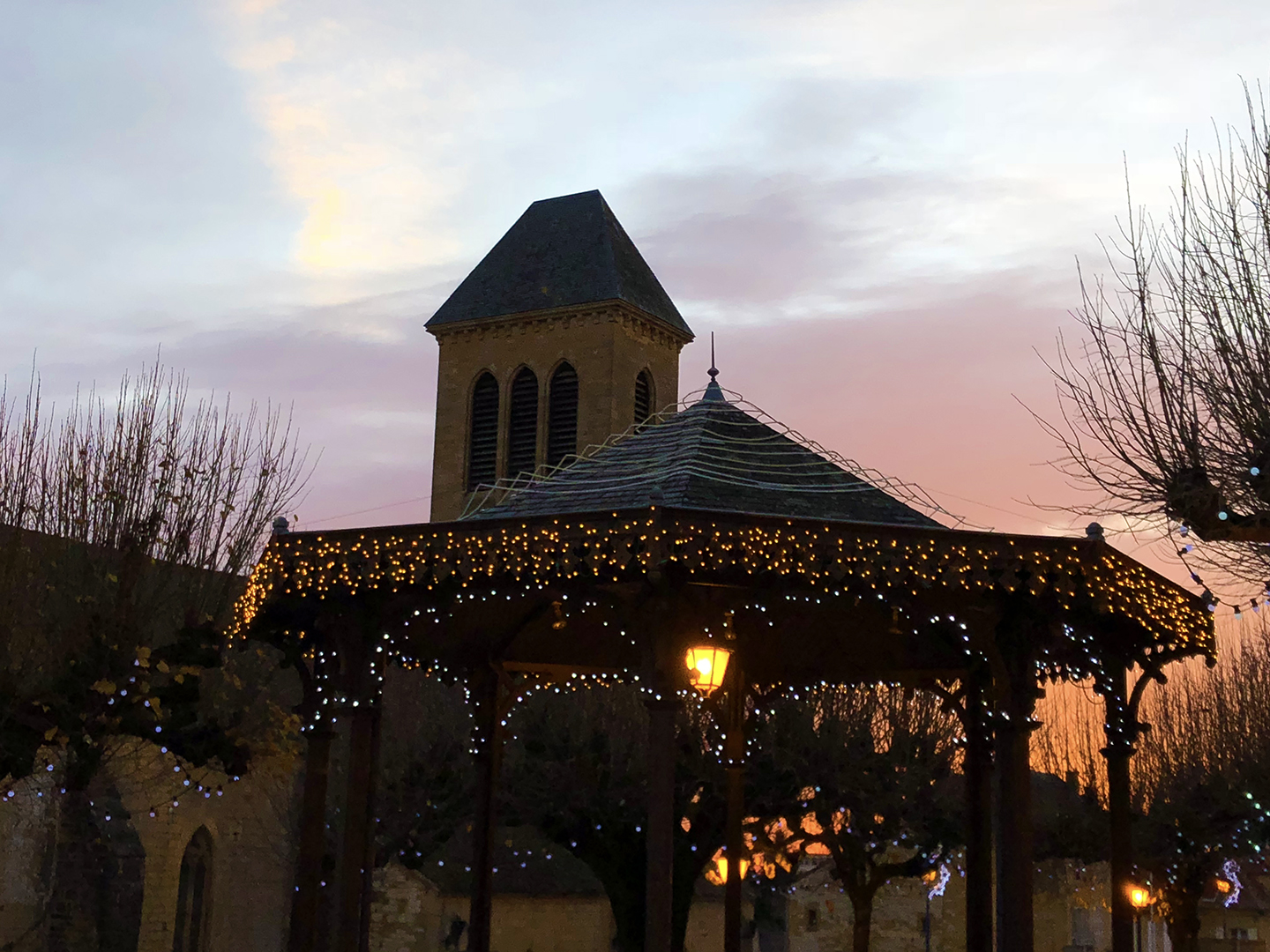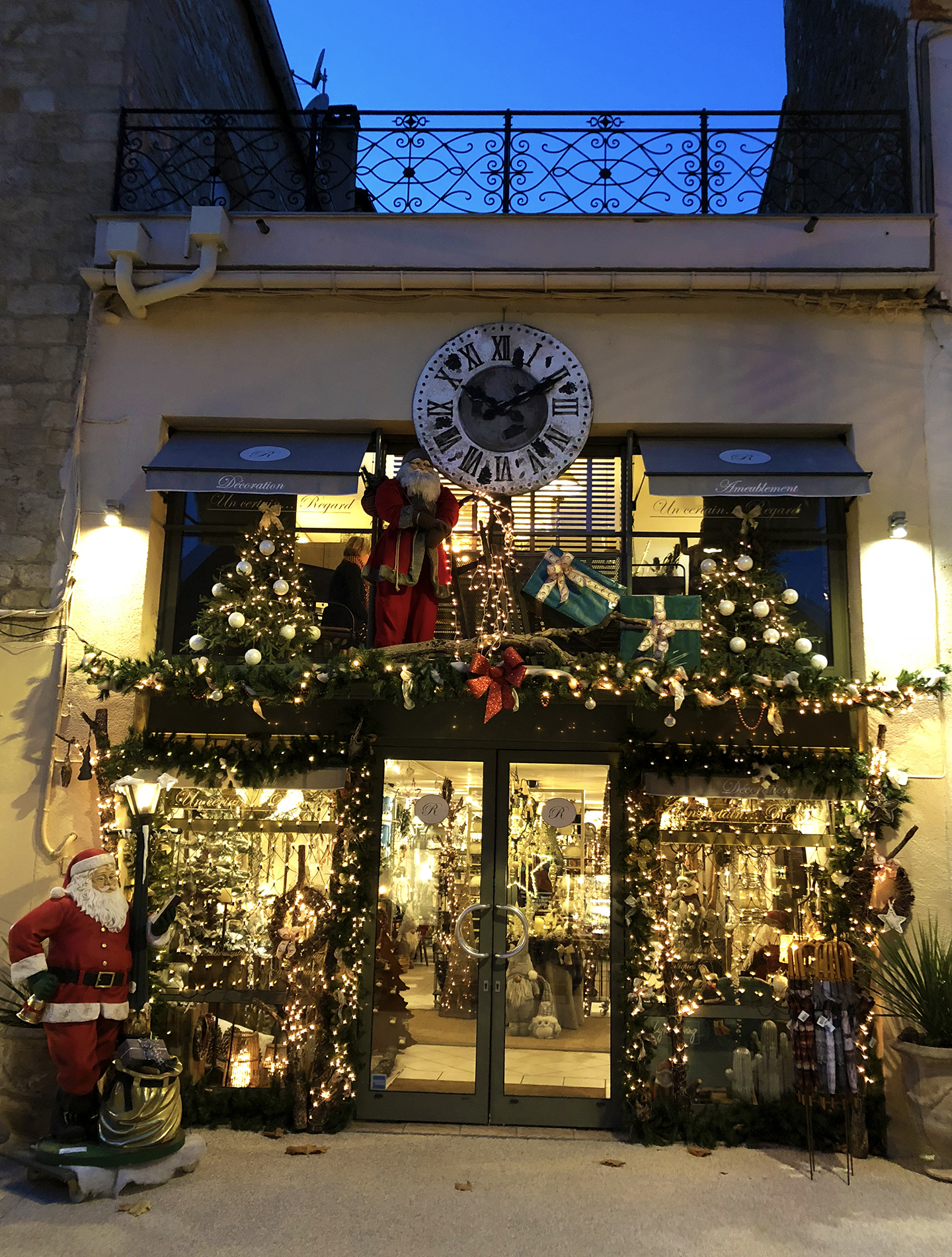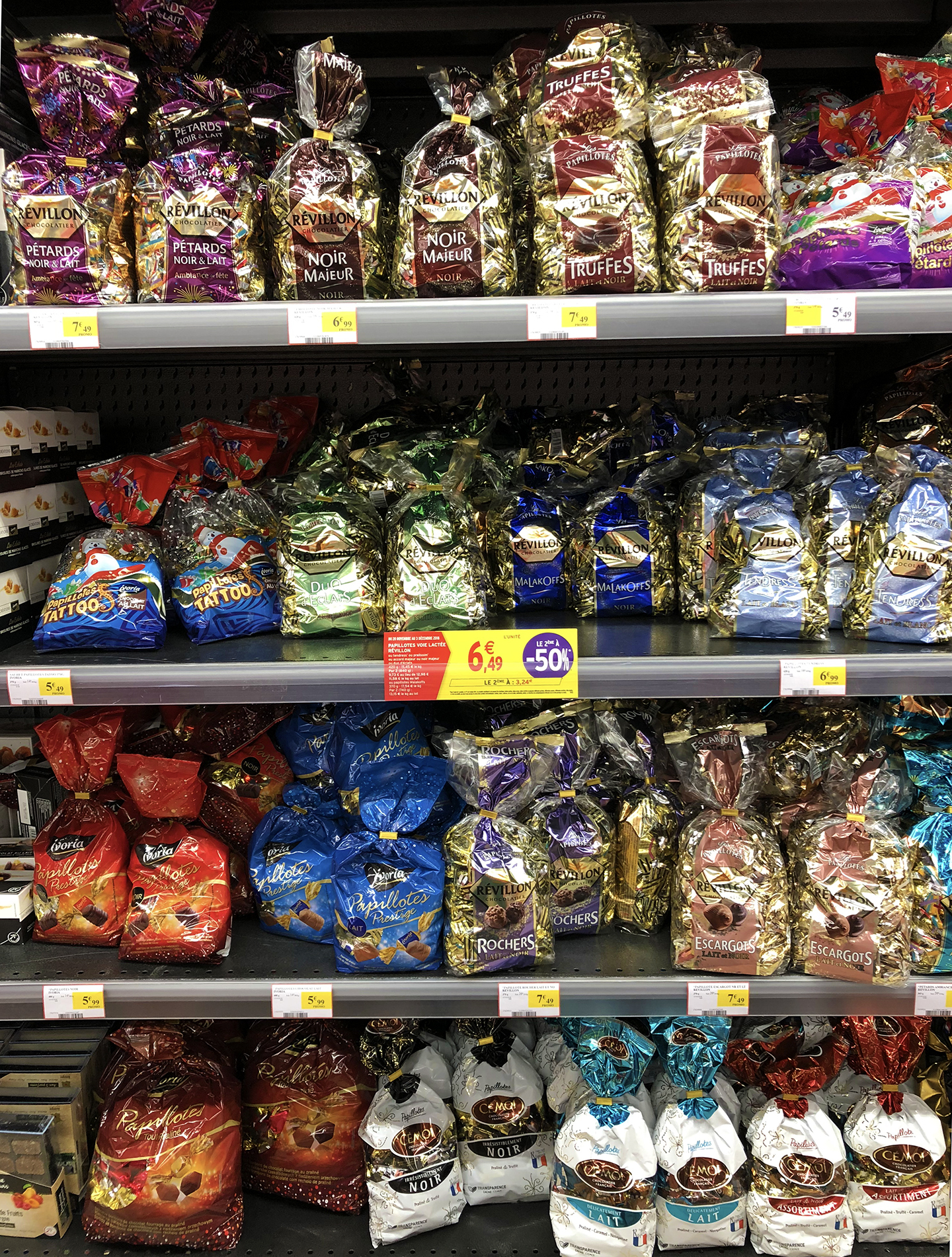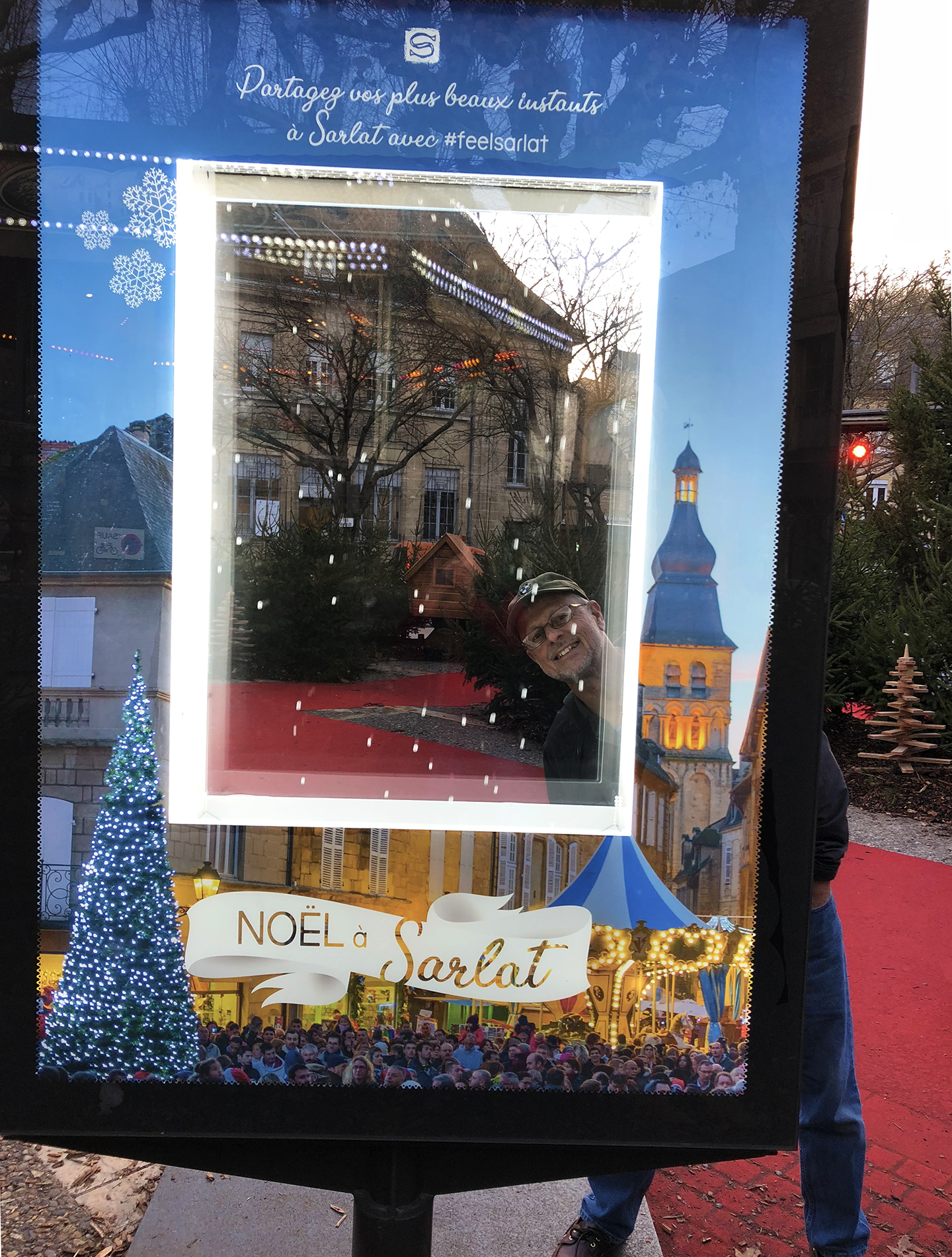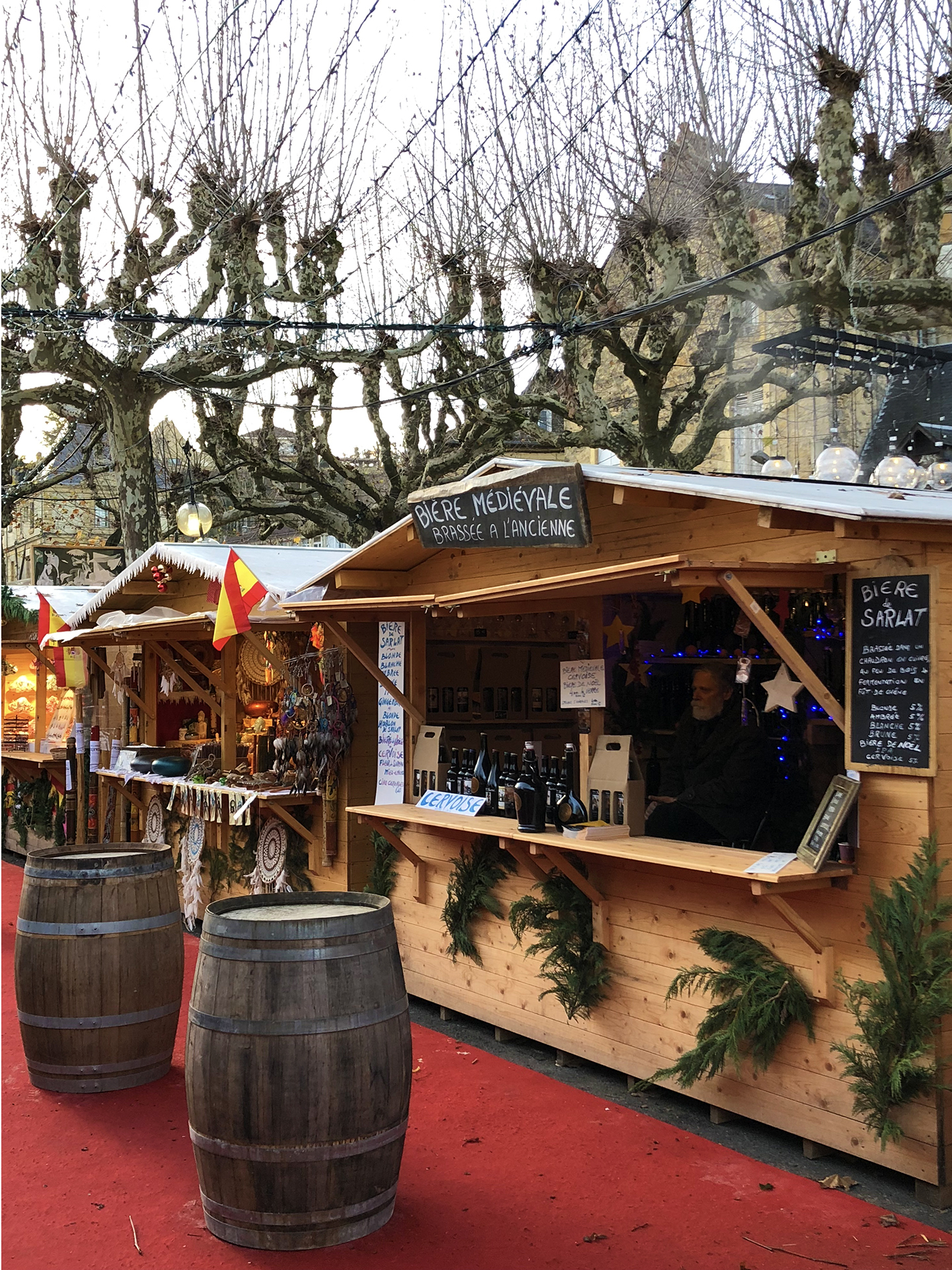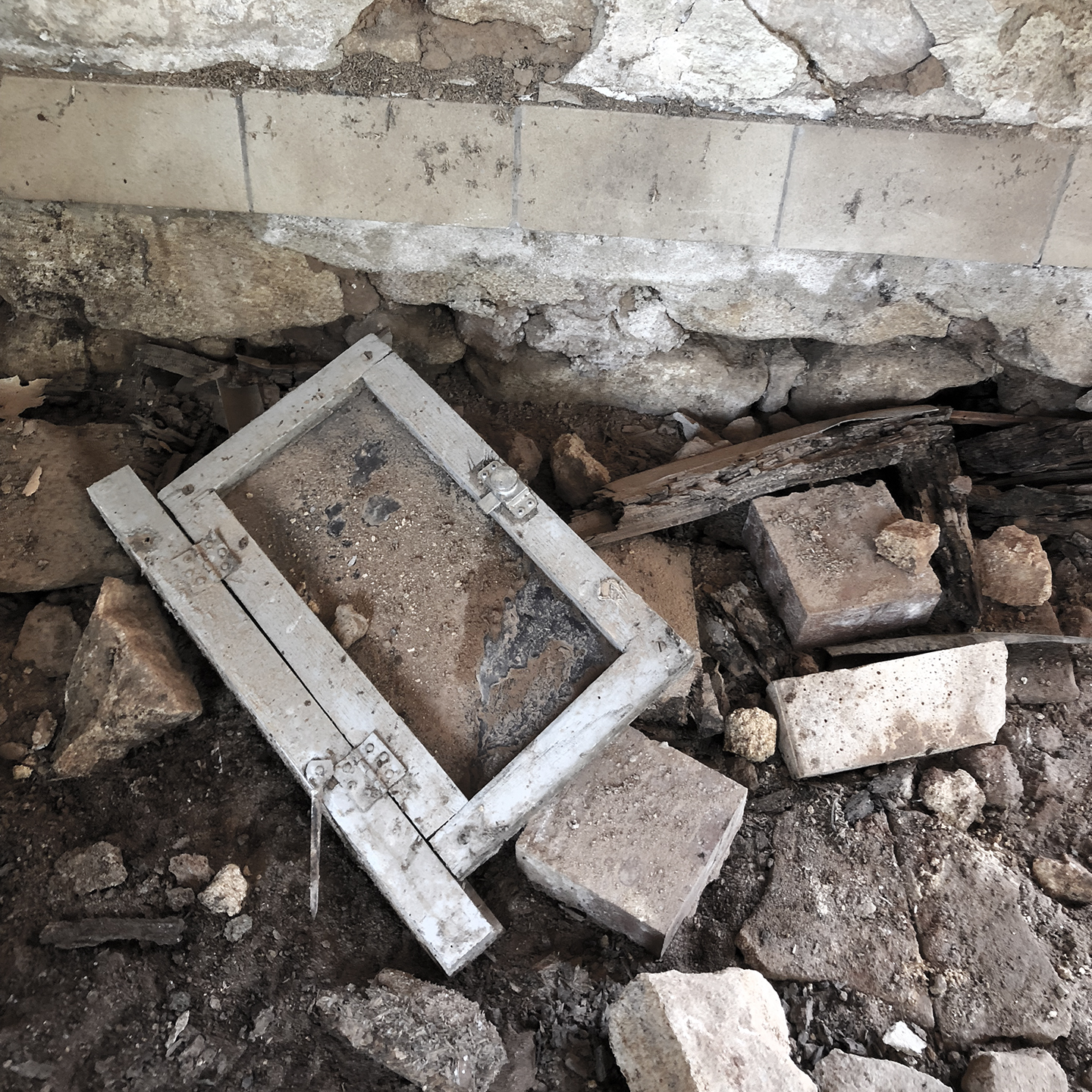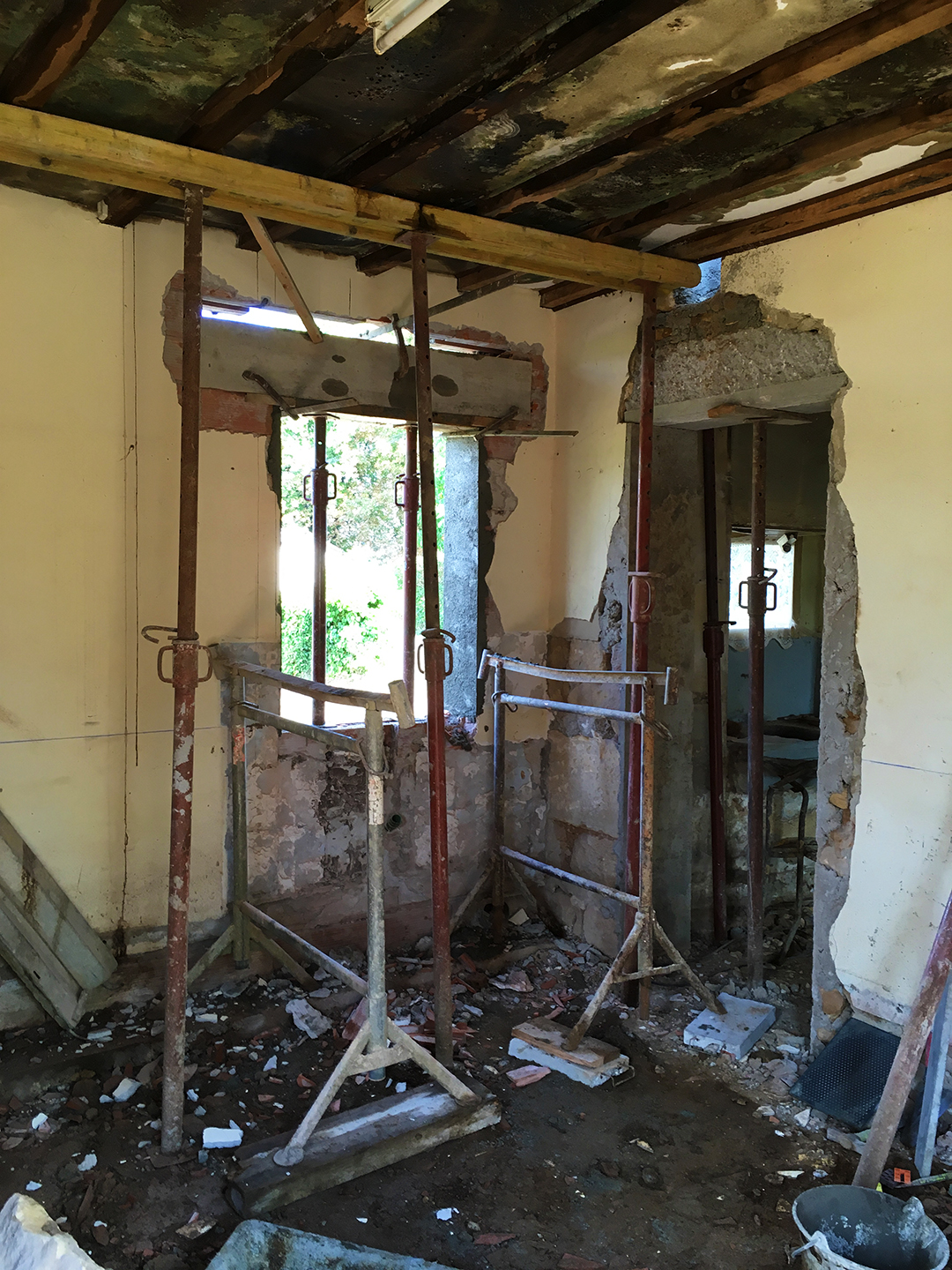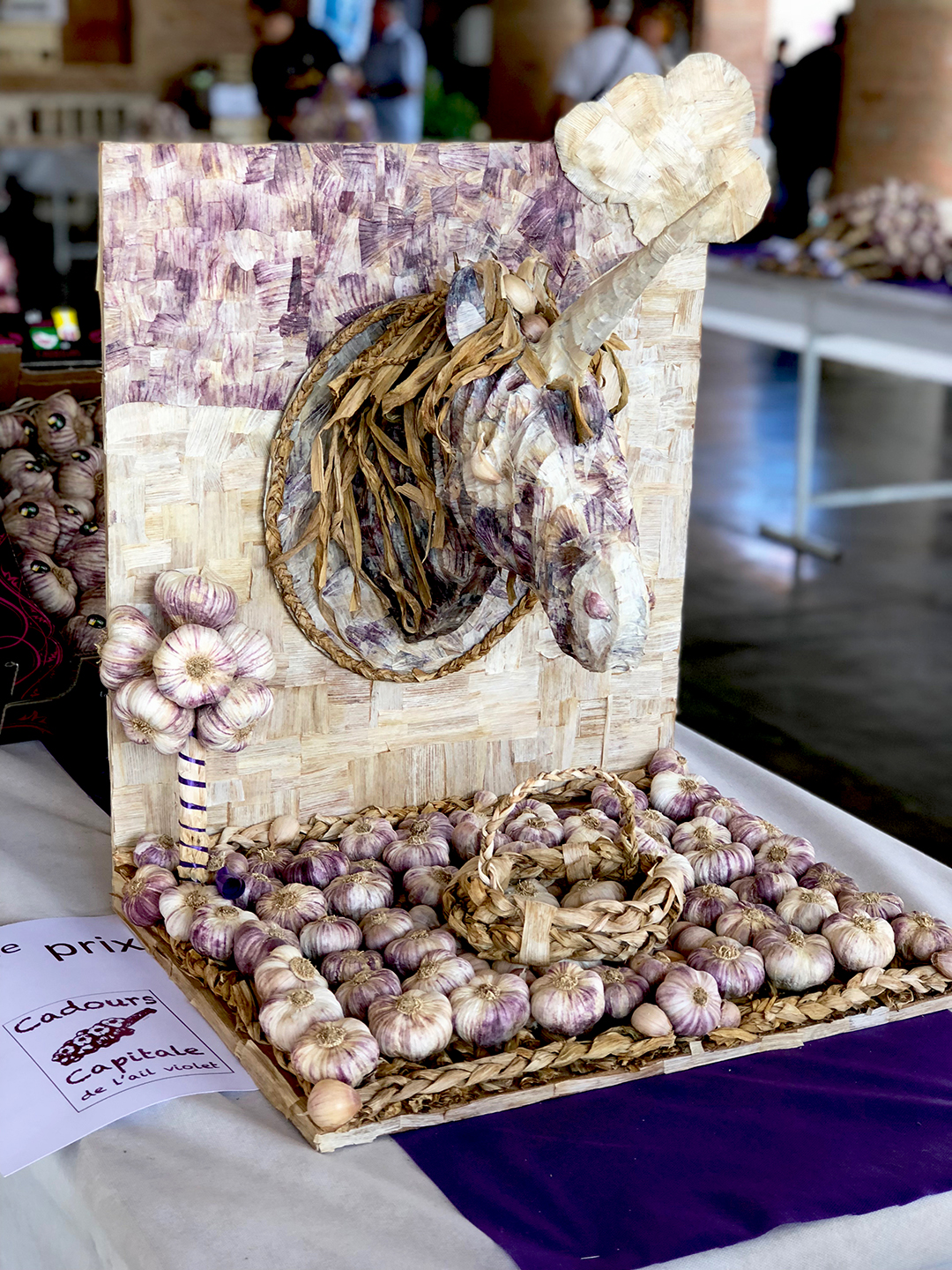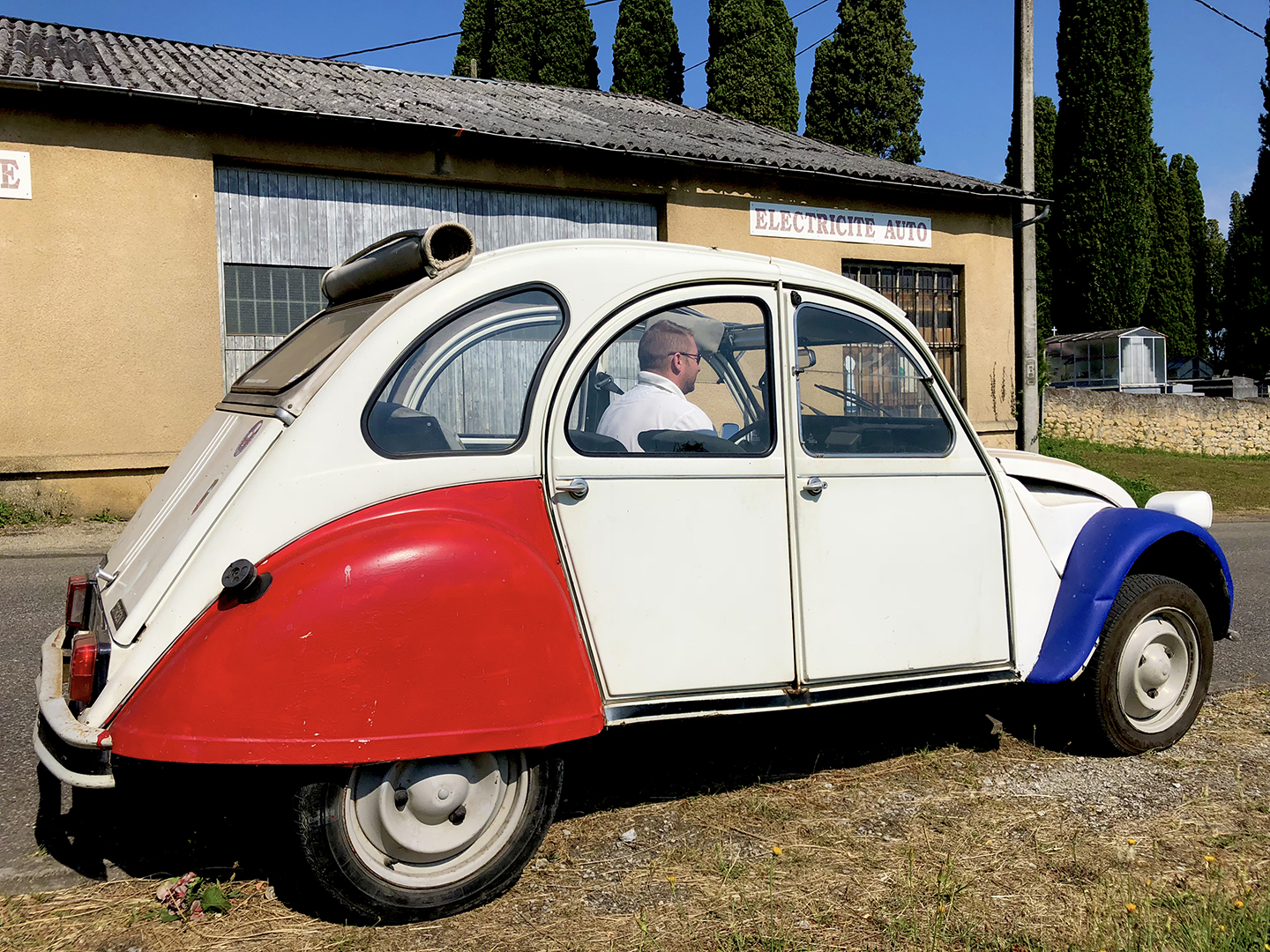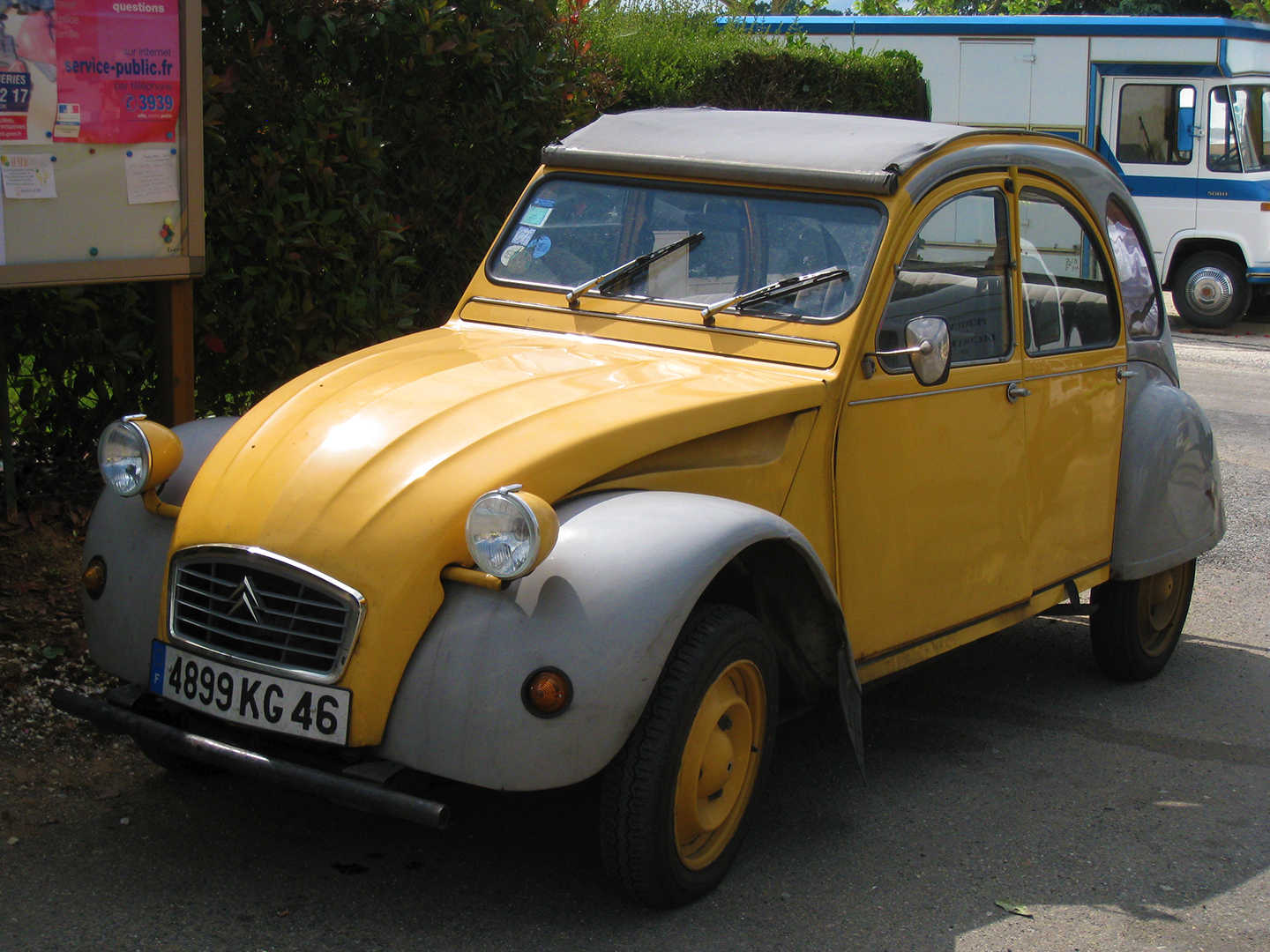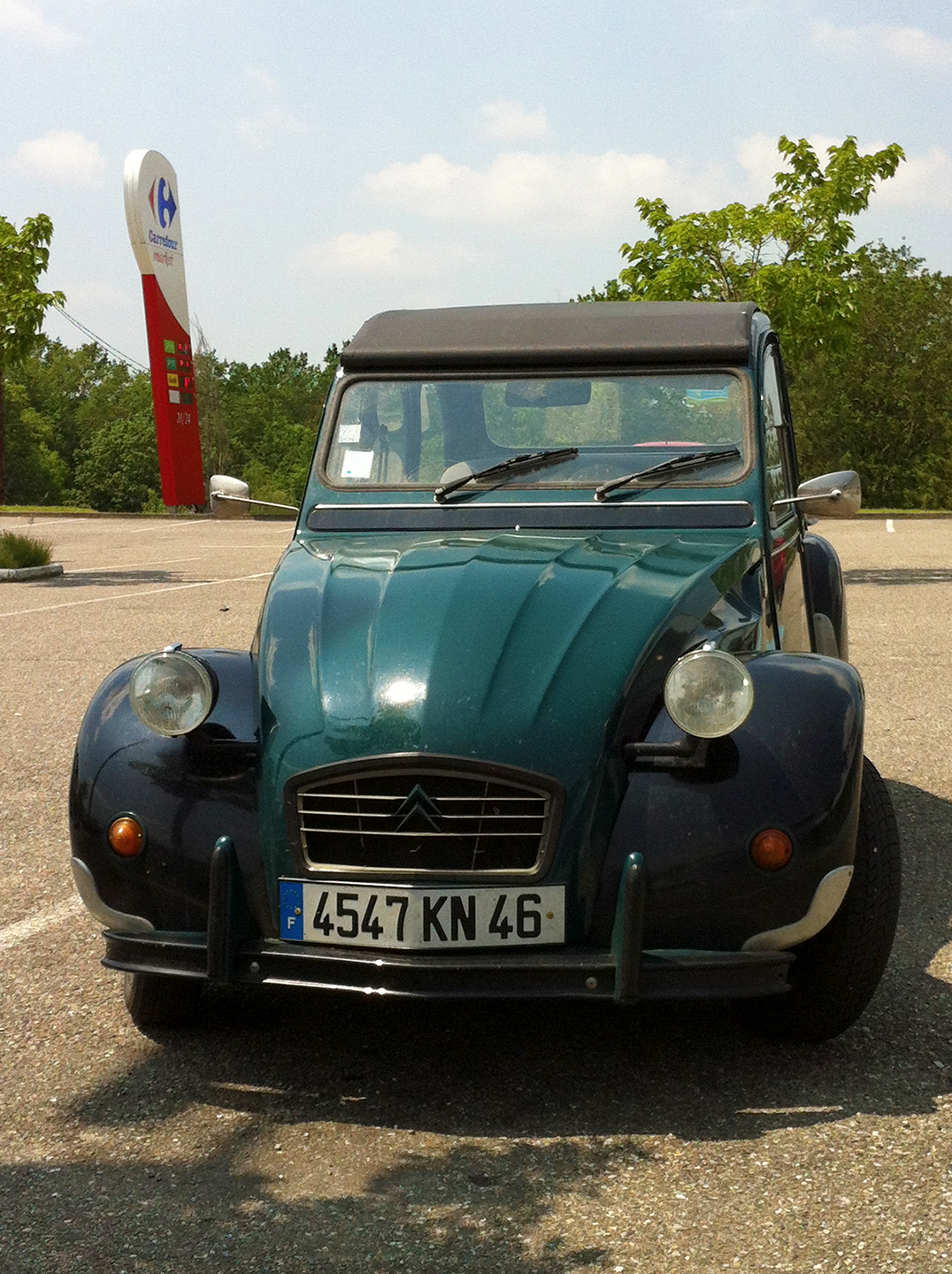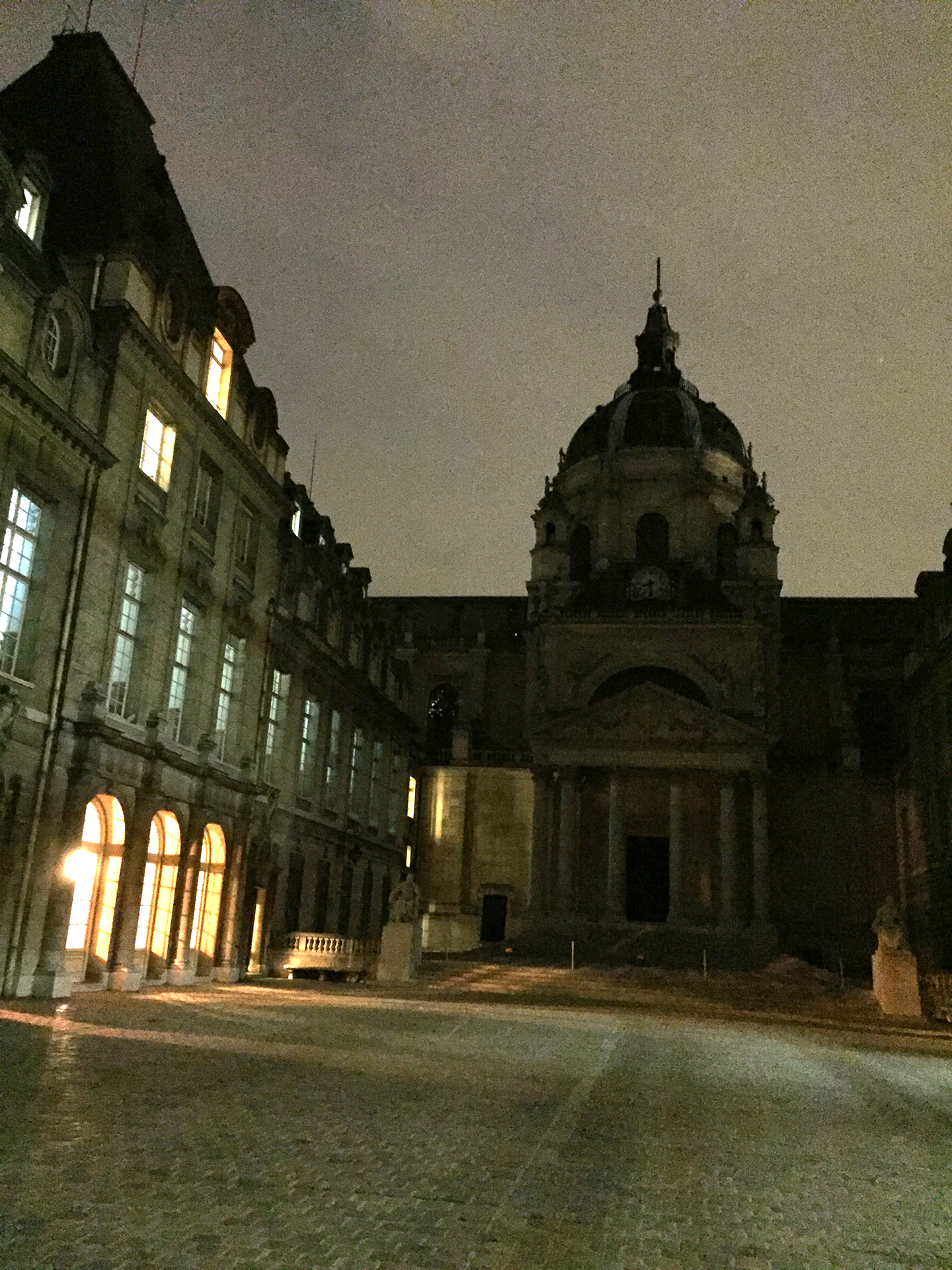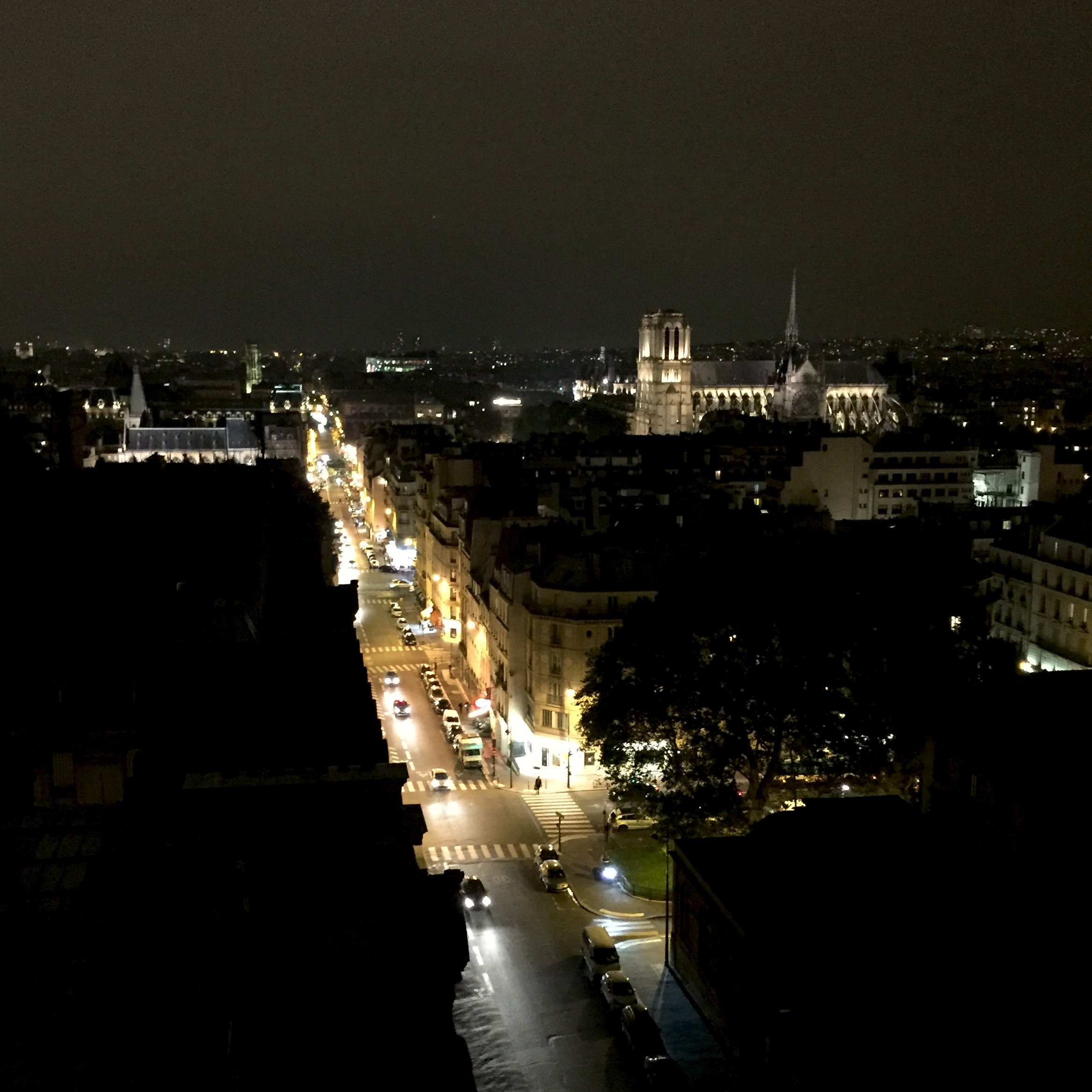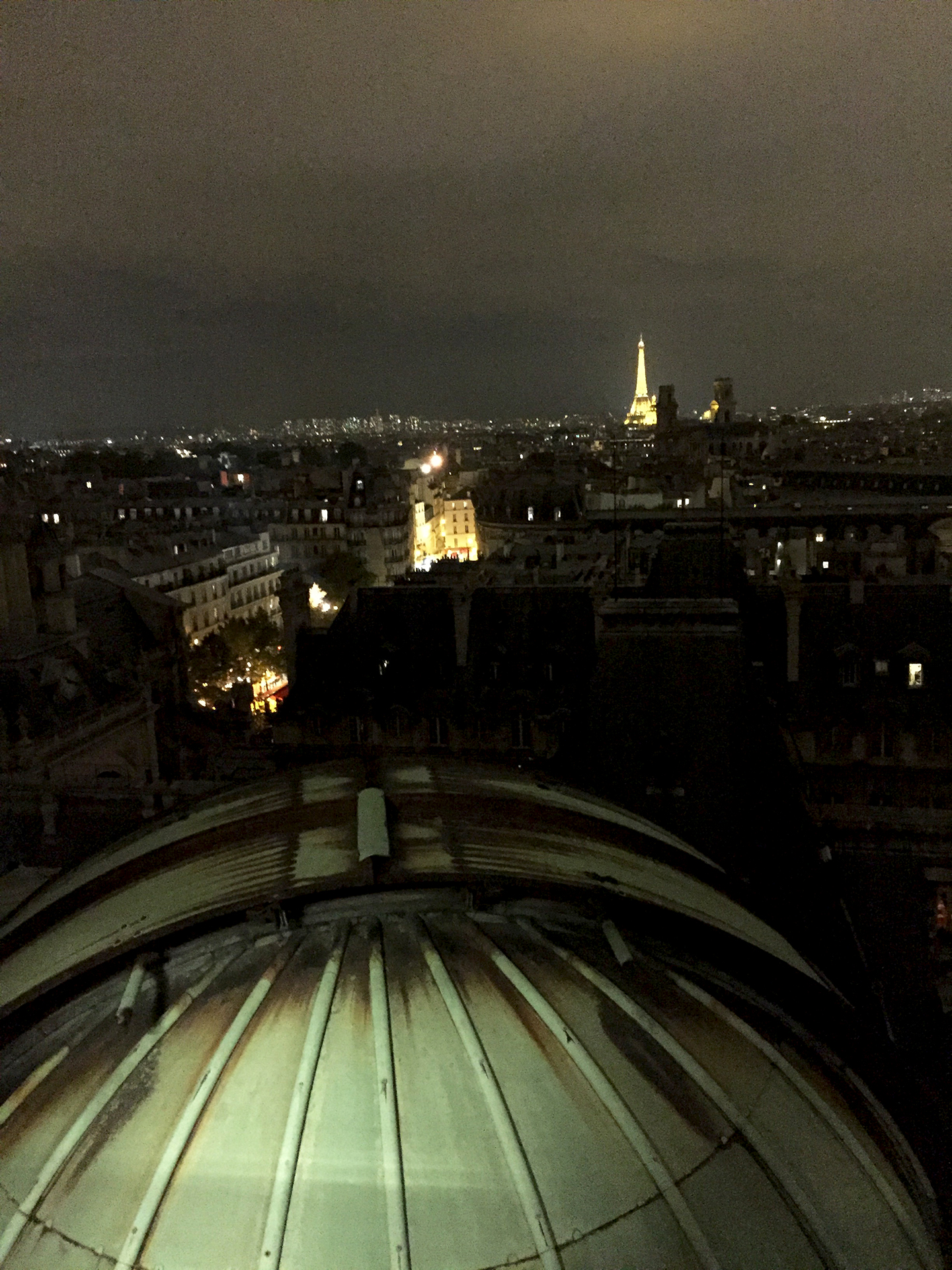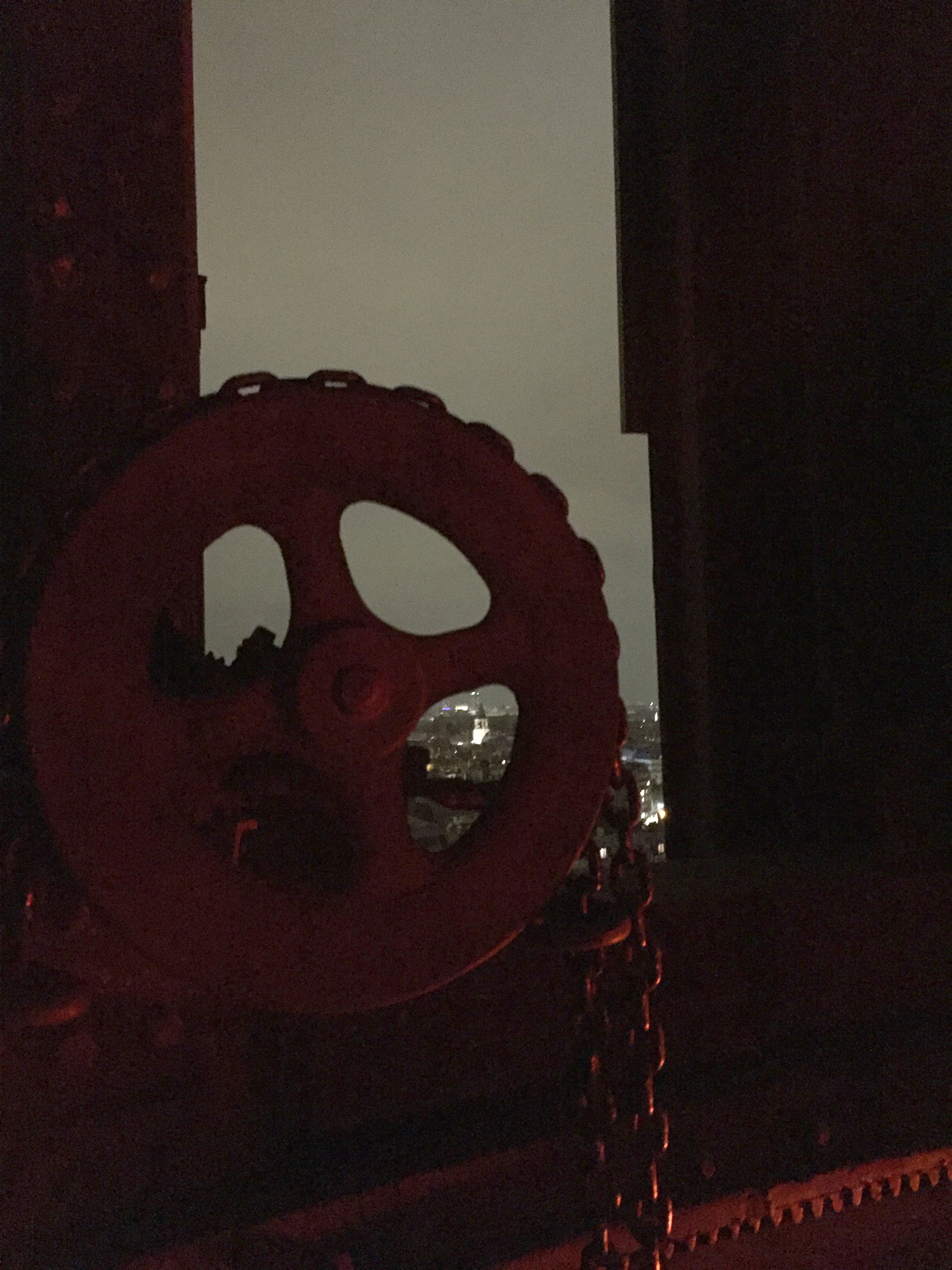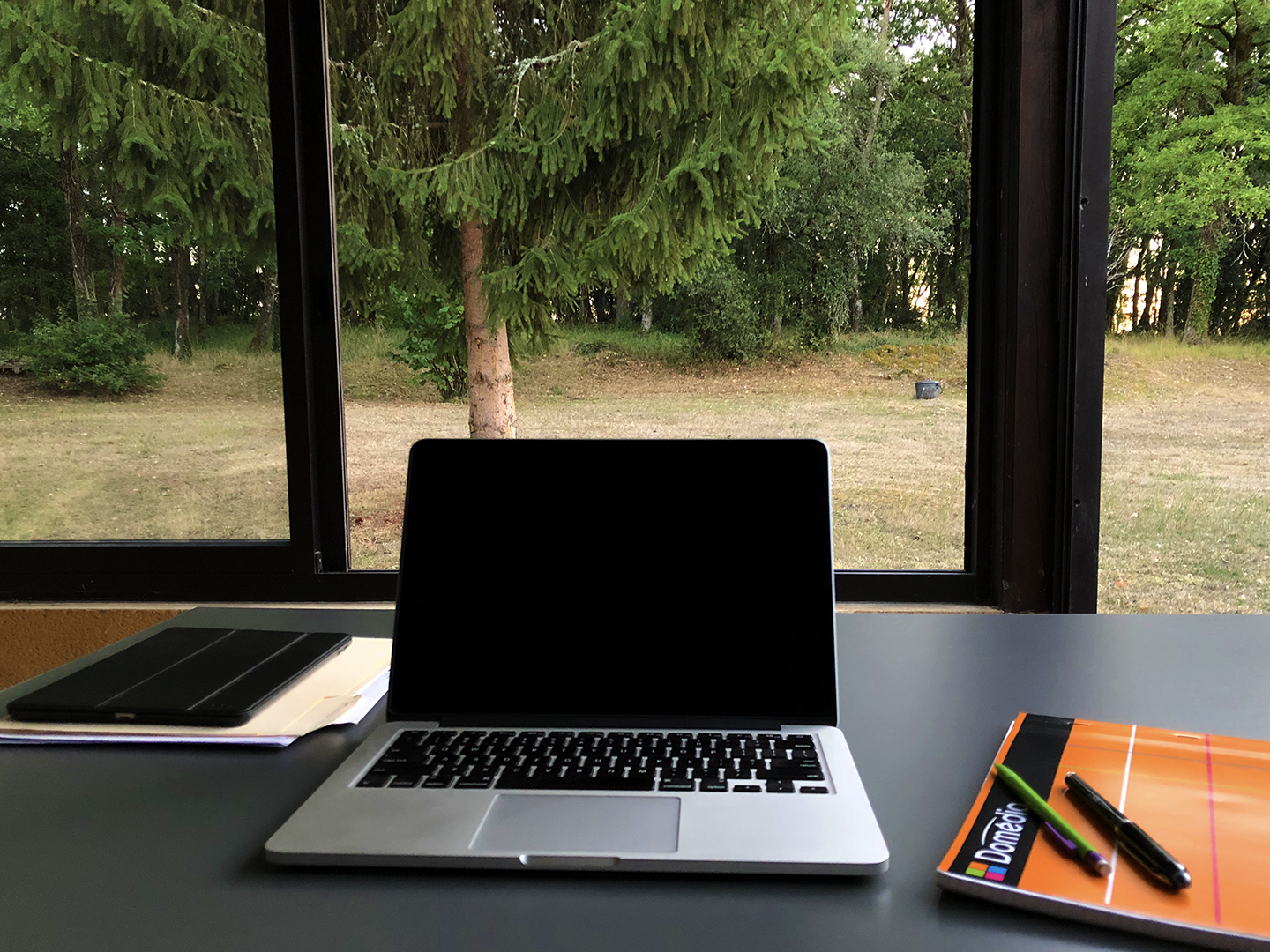Things tend to be simpler in rural France. Take Christmas, for instance. I certainly didn’t expect the Christmas illuminations in our area to rival those in Paris but I was a tiny bit underwhelmed at first.
Christmas tree in Payrignac
Payrignac, our village of 700 souls, took the safe route: a good size tree in front of the Saint Agapit church; another one near the war memorial; three deer cutouts (particle board?) strung with lights by the lake; an illuminated Joyeuses Fêtes sign hung on the front of the primary school; an étoile filante of light bulbs decorating the side of the City Hall. Yep, I think that was about it.
Christmas decor in Gourdon. Fail…
Gourdon itself is 4 km away; the third largest city of the département, it boasts (!) a population of 4,500. Apparently, the extensive renovation of the tour de ville made a serious dent in the city budget this year. When we first discovered the huge Christmas Balls hanging by the City Hall, the Post Office and the Tribunal, we figured they had been purchased when Macron was a toddler. Granted they looked a little better at night but, really, whoever thought this was a good idea?
Music kiosk in Gourdon at dusk
On the other hand, the music kiosk and the garden around it received a more appealing treatment. My guess is that the same lights can easily be used again for Bastille Day; let’s just kill two (holiday) birds with one stone.
Un Certain Regard, my favorite boutique for home decor
Good thing the little boutiques on the above-mentioned tour de ville did their part to dress up the streets in a classy way.
En Vie de Femme, a clever name for women jewelry and accessories
Floral shop and the new “upgraded” sidewalks
And, yes, the renovations made the sidewalks larger, more level and less treacherous, especially when strolling at night. Which, incidentally, occurs shortly after 5 pm these days.
Fishnet trees at the supermarket. No tree lots in sight around here.
I just don’t think the French are as “fussy” as Americans when it comes to Christmas decorations. Very few people hang lights outside their homes: I’m sure energy costs are a factor. Most folks set up a tree in their house but nobody seems to have issues with purchasing a conifer completely wrapped in netting. My mother-in-law, who always insists on perfect symmetry, would tomber dans les pommes at the mere thought of buying a tree sight unseen. Oh, and an enterprising person could perhaps start a business selling tree skirts. Just saying…
Papillotes! So many choices…
Let’s face it: for the French, Christmas is all about the food. It starts around November 20 when the supermarkets overflow with friandises. Mind you, candies are just as much for adults as for children: marrons glacés, calissons d’Aix, papillotes, candied fruits, nougat, stuffed prunes, etc. compete with an incredibly large selection of chocolates. The boxes were piled above eye level and I felt I was navigating through a maze of delicious sweets.
Hens, capons, and turkeys. Tiny turkeys. Tasty turkeys… These holiday birds average 6-8 pounds.
By mid-December, the pastry aisles were filled with traditional Yule logs and the frozen section with bûches glacées. Smoked salmon, huîtres, scallops, lobster, escargots, and foie gras are perennial favorites for a first course, or second, or third. The plat de résistance always generates lively debates: in the old days, goose used to be very popular in the area but the current bird of choice seems to be capon.
Ho, Ho, Ho! Santa checks out our medieval streets.
Of course, Santa made a few appearances. I first spotted him in the rue du Majou. The trip from the Pôle Nord was so long, he needed to layover and replenish his toy supply in Germany.
An athletic Santa. The Mediterranean diet is really paying off!
I saw him again rope climbing into a window in the old part of town and had to marvel at how fit he looked. We now have the unequivocal proof that duck fat and red wine are good for your health.
All aboard!
Santa and one of his elves also offered rides around town in a classic horse-drawn wagon. I guess the reindeers needed a break.
Rick photobombs the Marché de Noël in Sarlat
I have a love-and-hate relationship with Sarlat: while thoroughly impressed by its architecture, I feel the old town has become too commercial. Nevertheless, we decided to visit the Marché de Noël, the second-largest in Nouvelle-Aquitaine (I imagine Bordeaux takes the top honor.) I made a point of going on a Tuesday afternoon, before school break, hoping it would not be too crowded. It turned out to be a good plan as we were able to cruise through the 70 chalets in record time.
Guernica in Sarlat. Dali’s The Persistence of Memory and works by Miró, Goya, and Velázquez were hung on the sycamores. Well, reproductions..
This year’s theme was Spain: I suppose Christmas is not thematic enough. Some products were made locally (donkey milk soaps, mohair shawls, wooden toys) and a few came from the country-that-shall-not-be-named.
Medieval beer. Some things get better given longer (with apologies to Abbot Ale…)
Vin chaud. It warms you up on a cold afternoon.
Actually, the whole thing seemed to be a good excuse for people to hang out, eat, and enjoy an adult beverage. In addition to empañadas, tapas, chorizo, Serrano ham or churros, one could also order oysters, frog legs, escargots, porcini soup, foie gras burgers, crêpes, waffles, roasted chestnuts, and more delicious foods, to be washed down with wine, medieval beer, or vin chaud. Just a notch above what the food court offers at your local mall.
Christmas decor at Mom’s retirement home
Last weekend, we headed out to Grenade-sur-Garonne to spend Christmas with my sister and her family. We picked up Mom at the retirement home where she is currently staying and I was quite impressed with the way they had decorated the facility, inside and out. She found a present in her room when we drove her back: a lovely collier de perles. I have no idea what Santa brought to the male residents.
I’m using this photo of Moulin de Planiol (a B&B a few miles away) for my Bonne Année cards this year
I hope your Christmas was as delicious as mine. I have to say that it was very, very nice to have unrestricted access to the variety of wonderful food that France produces at this time of the year. As we are leaving 2018 behind, I want to wish you a Happy New Year and thank you for all your encouragement as I transition to living in my native country again. There are many new adventures I want to share with you and I appreciate your following my musings. Let’s toast the new year: I wish 2019 is filled with perfect moments for all of us!
Vocabulary
Joyeuses Fêtes: Happy Holidays
L’étoile filante (f): shooting star
Le tour de ville: lit. city tour; in this case, it refers to the boulevard that encircles the medieval town, where the moat used to be.
Le Tribunal: courthouse
Tomber dans les pommes: to faint; lit. to fall into the apples
La friandise: sweet, candy
Le marron glacé: candied chestnut
Le calisson: a specialty from Aix-en-Provence that combines ground almond and candied melon, shaped like a diamond.
La papillote: a specialty from Lyon where a chocolate bouchée is double-wrapped; the first paper wrappper is printed with a quote, the outside wrapper is made of foil with frilly ends.
La bûche glacée: a frozen Yule log, mostly made of ice cream, lighter than the traditional bûche pâtissière.
L’huître (f): oyster
Le plat de résistance: main course (the dish that will allow you to resist until the next meal)
Le Pôle Nord: North Pole
Le vin chaud: warm mulled wine
Le collier de perles: pearl necklace


